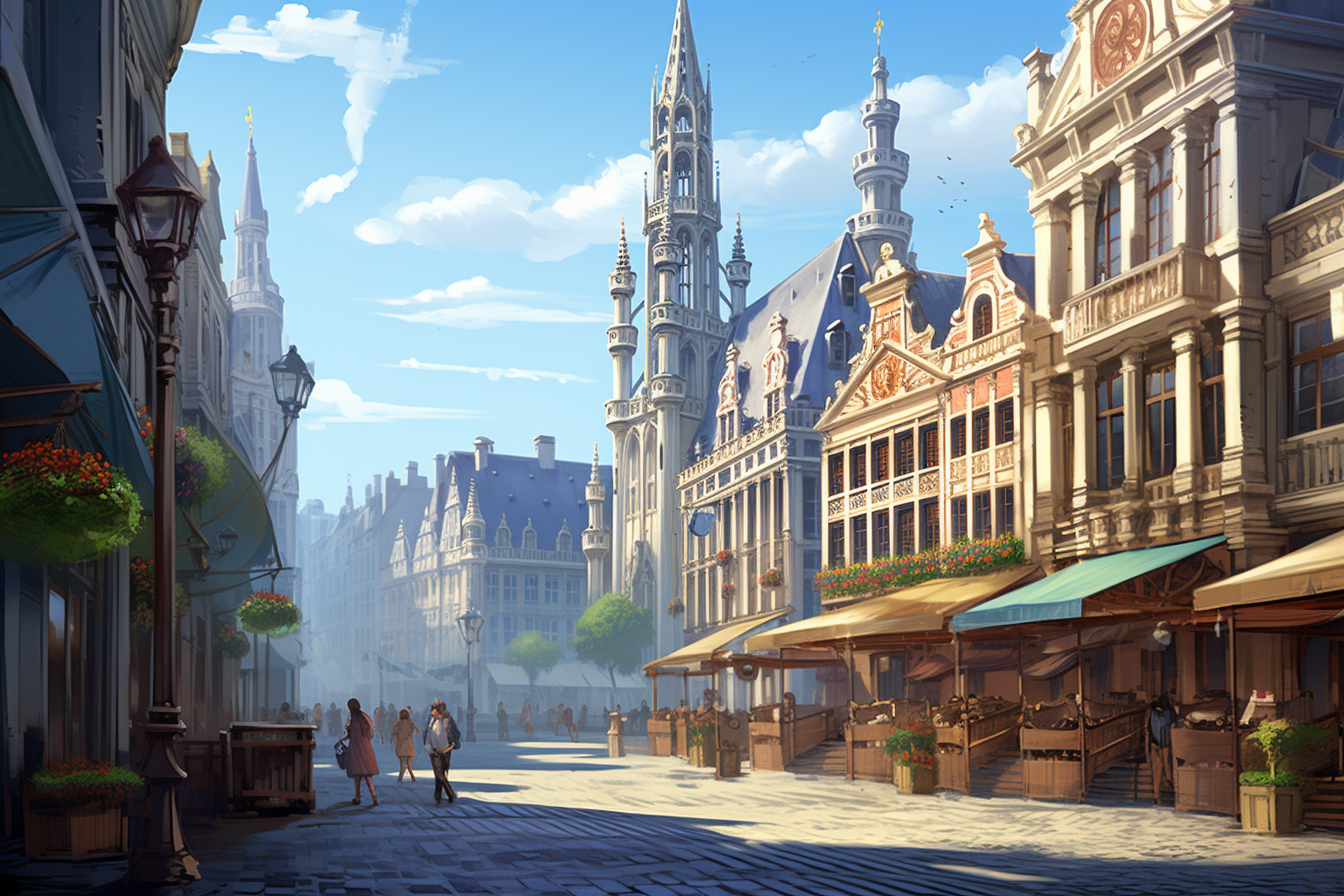A Timeline of Belgium
A Broad Timeline of Brussels 2500BC to Present day

Prehistoric and Celtic Era (circa 2500 BC - 1st century BC)
Belgium's early history saw the region inhabited by Celtic tribes, most notably the Belgae. These tribes lived in fortified settlements, practiced agriculture, and traded with neighbouring regions.
Roman Rule (1st century BC - 5th century AD)
After Julius Caesar's conquest, the region became part of the Roman Empire as Gallia Belgica. Roman influence led to urbanization, with cities like Tournai and Tongeren emerging as significant centers. The Romans introduced new architectural styles, roads, and trade networks.
Frankish Era (5th - 9th century AD)
Following the fall of the Western Roman Empire, the Franks, a Germanic tribe, dominated the region. Under Charlemagne, the Frankish Empire reached its zenith, with Aachen (now in Germany, close to the Belgian border) as its capital.
Division of the Carolingian Empire (843 AD - 10th century)
Following the Treaty of Verdun in 843 AD, the vast Carolingian Empire was divided. The western parts of present-day Belgium went to West Francia (which would evolve into modern-day France), while the eastern regions became part of Lotharingia, later absorbed into the Holy Roman Empire.
Rise of Trade Cities (10th century - 12th century)
The Low Countries saw the emergence of influential trade cities during this period. Bruges, in particular, became a significant center for international trade, benefiting from its access to the North Sea. Ghent also began its ascent as a cloth manufacturing and trade hub.
Golden Age of Flemish Cities (12th century - 14th century)
Cities like Bruges, Ghent, and Antwerp reached their zenith in terms of economic and cultural influence. The cloth trade, especially, brought immense wealth to these cities. This period also saw the rise of the Hanseatic League, with Bruges becoming one of its principal ports.
Burgundian and Habsburg Rule (14th century - 15th century)
By the end of the 14th century, much of the region came under the control of the Duchy of Burgundy. The Burgundian era was marked by administrative reforms and cultural developments. By the late 15th century, the Habsburgs inherited the Burgundian territories, further shaping the region's political landscape.
Inception of Habsburg Influence (1477 - 16th century)
The union of Mary of Burgundy and Maximilian I of Austria in 1477 initiated the Habsburg era in the Low Countries. This dynastic marriage brought the territories into the vast Habsburg realm, setting the stage for centuries of Habsburg influence.
Spanish Habsburg Dominance (16th century - early 17th century)
The Low Countries came under the rule of the Spanish branch of the Habsburgs. This period was marked by religious tensions, especially between the Protestant north and the Catholic south. These tensions played a significant role in the outbreak of the Eighty Years' War in 1568, a conflict primarily between Spain and the Dutch Republic.
Treaty of Westphalia and Continued Strife (1648 - late 17th century)
The Treaty of Westphalia in 1648 officially recognized the independence of the Dutch Republic, but the southern parts (present-day Belgium) remained under Spanish Habsburg control. The region continued to be a battleground, facing invasions from France and enduring various European conflicts.
Austrian Habsburg Era (early 18th century - 1794)
Following the Treaty of Utrecht in 1713, control of the region transitioned from the Spanish to the Austrian branch of the Habsburgs. Under Austrian rule, the region experienced relative peace, administrative reforms, and economic development. However, the winds of change from the French Revolution to the east would soon challenge the Habsburg's hold.
French Revolution and Napoleonic Era (late 18th - early 19th century)
Belgium was annexed by Revolutionary France in 1795. Napoleonic reforms introduced during this period had a lasting impact, but his defeat at Waterloo (in present-day Belgium) in 1815 led to the Congress of Vienna, which merged Belgium and the Netherlands.
Belgian Revolution and Independence (1830 - 20th century)
Dissatisfied with Dutch rule, Belgians revolted in 1830, leading to the establishment of the Kingdom of Belgium. The country remained neutral during WWI but was invaded by Germany. The post-war period saw Belgium's colonial expansion in Africa.
World War II and Aftermath (20th century)
Germany again invaded neutral Belgium in 1940. Post-liberation in 1944, Belgium became a founding member of NATO and the EU, and Brussels emerged as a centre of European politics.
Modern Belgium (Late 20th century - Present)
The latter half of the 20th century saw significant constitutional reforms, transforming Belgium into a federal state. The country has grappled with linguistic and regional differences, primarily between the Flemish north and the Walloon south.





